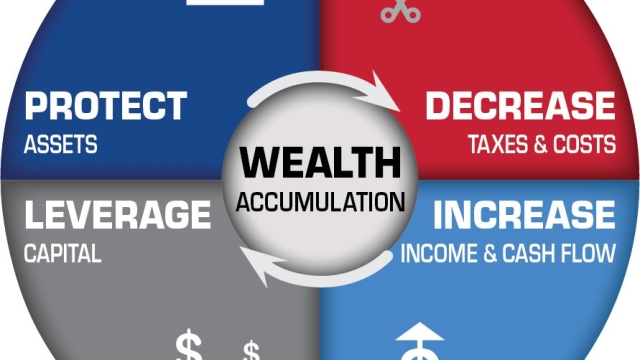Unlocking the Potential of Microcaptive Insurance
Microcaptive insurance, often referred to as 831(b) insurance, is a niche strategy that has been gaining attention in recent years. This unique form of captive insurance allows small and mid-sized businesses to create their own self-insurance company, providing them with greater control and potential tax advantages. While traditional captive insurance has long been utilized by large corporations, microcaptive insurance opens up new possibilities for smaller businesses looking to manage their own risks and potentially reduce their tax liabilities.
At its core, a microcaptive operates similarly to a traditional captive insurance company. It functions as an independent entity that provides insurance coverage exclusively to its parent company or a closely held group of businesses. The key distinction lies in the specific tax benefits that microcaptive insurance can offer under the IRS 831(b) tax code. Under this code, qualifying microcaptives can elect to be taxed only on their investment income, while the premiums received for providing insurance coverage are not subject to taxation.
The allure of the microcaptive model is not solely the potential tax advantages. By creating their own captive insurance company, businesses gain the ability to customize their insurance policies and coverage to align precisely with their unique risk profiles. This tailored approach allows for more flexibility in managing risks and can often result in cost savings compared to traditional insurance options. Additionally, microcaptives can accumulate investment income tax-free, giving businesses the opportunity to build reserves and potentially explore alternative investments to further enhance their financial position.
However, as with any tax-related strategy, it is crucial to navigate the microcaptive insurance landscape carefully and in compliance with IRS guidelines. Recent scrutiny from the IRS regarding perceived abuse of the 831(b) tax code has prompted stricter regulations and increased reporting requirements for microcaptive participants. It is essential for businesses considering this approach to consult with knowledgeable professionals who can guide them through the complexities of establishing and maintaining a compliant microcaptive insurance structure.
In this article, we will delve deeper into the intricacies of microcaptive insurance, exploring its potential benefits, challenges, and the recent developments in the regulatory landscape. By gaining a comprehensive understanding of microcaptive insurance, businesses can determine if this strategy is the right fit for unlocking their potential for risk management and tax efficiencies.
The Basics of Microcaptive Insurance
Microcaptive insurance, often referred to as 831b insurance or captive insurance, is a unique type of insurance arrangement that has gained popularity in recent years. It operates under the specific provisions outlined in the IRS 831(b) tax code, which grants certain tax advantages to small insurance companies.
At its core, microcaptive insurance involves the creation of an insurance company by a business or group of related businesses. This company, known as a captive insurance company, is formed to provide coverage for specific risks that traditional insurance may not adequately address. The primary purpose is to self-insure and control the risk management process, rather than relying solely on commercial insurance providers.
One of the key benefits of microcaptive insurance is the tax advantages it offers. Under the IRS 831(b) tax code, qualifying small insurance companies can elect to be taxed only on their investment income. This means that the premium income received from the insured businesses is not subject to taxation, allowing the captive to accumulate funds for covering potential claims and investment purposes more efficiently.
However, it is crucial to note that microcaptive insurance arrangements often undergo scrutiny from the IRS to prevent potential abuse of the tax advantages. As a result, strict compliance with the rules and guidelines set forth in the IRS 831(b) tax code is essential for businesses considering utilizing this insurance strategy.
In the next section, we will explore the benefits and potential risks associated with microcaptive insurance, shedding light on the reasons behind its increasing adoption by businesses across various industries.
Benefits of 831(b) Captive Insurance
Microcaptive insurance, specifically 831(b) captive insurance, presents numerous benefits for business owners. As a form of self-insurance, it allows companies to take control of their risks and potentially turn their insurance costs into profits.
One key advantage of 831(b) captive insurance is the potential for significant tax savings. By electing under the IRS’ 831(b) tax code, businesses can enjoy a favorable tax treatment on the premiums received by their captive insurance company. This can result in lower taxable income, leading to reduced tax liabilities and more funds available for reinvestment or other business endeavors.

Another benefit lies in the flexibility and customization that microcaptive insurance offers. Unlike traditional insurance policies, captive insurance allows companies to tailor coverage according to their unique risk management needs. This means businesses can obtain coverage for specific risks that may not be adequately addressed by the commercial insurance market, ultimately enhancing their overall risk protection.
Additionally, microcaptive insurance can offer long-term stability, particularly for industries that face cyclical or volatile markets. By setting up their own captive insurance company, businesses can maintain coverage even during challenging market conditions or periods of limited availability of commercial insurance. This stability can provide peace of mind and ensure that the company’s assets and operations are safeguarded regardless of external economic fluctuations.
In conclusion, 831(b) captive insurance provides businesses with numerous benefits ranging from potential tax savings to enhanced risk management and long-term stability. By unlocking the potential of microcaptive insurance, companies can take charge of their insurance needs and position themselves for a more secure and prosperous future.
Navigating the IRS 831(b) Tax Code
The IRS 831(b) tax code is a crucial aspect to consider when exploring the potential of microcaptive insurance. This particular section of the tax code specifically addresses insurance companies with annual premiums under $2.3 million. Understanding the nuances of this code becomes essential for anyone interested in harnessing the benefits of a microcaptive.
One of the key attractions of the 831(b) tax code is its taxation advantage. By being classified as a microcaptive insurance company, qualifying entities can benefit from certain tax exemptions. This includes the ability to exclude premiums received from taxation, making it an appealing option for businesses seeking to optimize their tax strategies.
However, it is important to note that while the 831(b) tax code offers several advantages, there are strict guidelines and regulations to follow. The IRS has laid out specific requirements for companies claiming this status. From maintaining adequate documentation to ensuring the majority of the premiums come from activities outside the insured’s business, adherence to these rules is crucial for compliance.
Navigating the IRS 831(b) tax code might seem daunting, but with proper understanding and guidance, it can be a valuable tool in unlocking the potential of microcaptive insurance. It is recommended to consult with experts well-versed in this area of the tax code to ensure full compliance and to make the most informed decisions for your insurance strategy.


